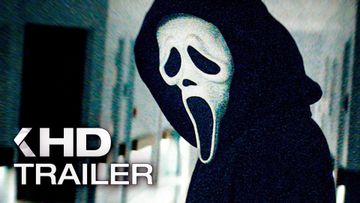Sweet Revenge: New "Friday the 13th" Film in Development
A new game is currently in the works as well
Jason Voorhees is getting ready for a bloody comeback – and in two versions at that. At this year's Comic-Con, Robbie Barsamian, Vice President of Horror Inc., had the pleasure of announcing a new "Friday the 13th" movie. The title: "Sweet Revenge". A new video game is also in the works.
While no specific release date or details on the cast and crew have been given so far, Barsamian emphasized that both projects are officially in development. This will be the first time in 16 years that the masked killer from Camp Crystal Lake appears in another feature film.
The new movie will not be a reboot, but rather a regular, new entry in the franchise canon. This would potentially bring it back more in line with the classic films of the 80s and 90s, which made Jason one of the most iconic characters in the horror genre. A new video game is being created in parallel. Following the success of the multiplayer game "Friday the 13th: The Game" from 2017, which was able to build up a loyal fan base despite legal hurdles, Horror Inc. is apparently focusing on further development – and possibly also on a new story campaign.
And of course there is the prequel series "Crystal Lake", which is still in the works at A24. The series will explore the backstory surrounding the infamous summer camp setting – and will likely shed more light on Jason's origins. Unfortunately, a release date has yet to be set.
The Most Notorious Serial Killers in the Horror Genre: Icons of Terror
They wear masks, they come in dreams, or sneak silently through the forest – serial killers in the horror genre are more than just antagonists. They are the symbols of our deepest fears, they embody pure evil, and have been causing sleepless nights for decades. Some murder with ice-cold calculation, others in a blood frenzy. But they all have one thing in common: They are unforgettable. Here are the most famous serial killers from horror films – living legends of fear who have become icons of pop culture.
Michael Myers: The Silent Shadow from "Halloween"
His white, expressionless face, his silent steps, and his unstoppable appearance have made him the ultimate embodiment of evil: Michael Myers from John Carpenter's "Halloween" series is the prototype of the masked killer. He entered the horror scene back in 1978 wielding a kitchen knife and carrying the weight of a gruesome child murder – since then, he has left his bloody trail in numerous sequels and reboots.
Michael never speaks, he explains nothing. He is personified horror: emotionless, empty, merciless. His myth lives from the inexplicable – and that is precisely what makes him so terrifying.
Jason Voorhees: The Revenge of Crystal Lake
The boy who drowned in the lake and returned as a vengeful killer – Jason Voorhees is the embodiment of slasher horror. With his iconic hockey mask and machete, he has burned himself deeply into the collective fear consciousness. Since "Friday the 13th" (1980), dozens of teenagers, camp counselors, and curious hikers have fallen victim to him. Jason doesn't speak, but his presence is almost always heralded by a sinister, ominous sound sequence ("ki-ki-ki ma-ma-ma"). What began as a simple revenge plot became more supernatural with each movie – Jason dies, comes back, goes into space, and becomes a cyborg. And yet he remains a constant: The silent death from the woods.
Freddy Krueger: The Nightmare on Two Legs
When sleep becomes a deadly danger, Freddy Krueger is not far away. With his burnt face, the red and green striped sweater, and his glove with razor blade fingers, he doesn't murder in the real world – but in his victims' dreams. Freddy is sarcastic, playful, and sadistic. Unlike his mute colleagues, he loves to talk, mock, and psychologically torture his victims before he strikes. In the "A Nightmare on Elm Street" series, he becomes a manifestation of guilt, fear, and trauma – especially for teenagers whose parents were once responsible for his death. Freddy is horror with a twinkle in his eye – and perhaps that's why he's so unforgettable.
Leatherface: The Monster from the Family
In "The Texas Chainsaw Massacre" (1974), we meet Leatherface – a chainsaw-wielding psychopath with a mask made of human skin. What sets him apart from other serial killers: He is not alone. He is part of a degenerate, cannibalistic family in the Texan wasteland. Leatherface is not calculating, but a tool. His violence is raw, chaotic, and extremely disturbing. His screaming, his physicality and his uncontrollable brutality make him one of the most unsettling characters in the genre. He represents less the "supernatural evil" and more the dehumanized monster born from isolation and madness.
Ghostface: The Voice of Meta-Horror
"What's your favorite scary movie?" – The horror in the "Scream" series often begins with this question. Ghostface is less a person than an idea – a mask, a costume, a game with rules. There is always a new killer (or several) behind it, which makes Ghostface particularly dangerous and unpredictable. The "Scream" series has deconstructed the slasher genre and revitalized it at the same time. Ghostface talks, questions, mocks – he is the serial killer who loves movies and murders in them at the same time. He is modern, clever, and always one step ahead – until he is (almost always) hunted down by a strong Final Girl character at the end.

Hannibal Lecter: The Cultivated Cannibal
Not a bloody slasher, but an intellectual serial killer – Hannibal Lecter is perhaps the most fascinating killer on this list. Made famous by "The Silence of the Lambs", his portrayal by Anthony Hopkins remains unmatched to this day: polite, brilliant, manipulative – and at the same time deeply monstrous. Lecter murders not out of rage or lust, but out of an almost aesthetic sense of superiority. He eats his victims, drinks wine with them, and quotes poetry. He is the nightmare who disguises himself as a gentleman – and that is precisely what makes him so unsettling.
Conclusion: When Evil Gets a Face
Whether with a mask, glove, or chainsaw – serial killers in the horror genre have long since become cultural archetypes. They embody the unspeakable, the threatening – and are often a mirror of social fears. What makes them so fascinating is their symbolic power: Michael stands for absolute evil, Jason for inevitable revenge, Freddy for guilt, Leatherface for chaos, Ghostface for pop culture – and Hannibal for intellectual horror. One thing is certain: As long as there are horror films, they will keep coming back. Because nothing is harder to kill than a movie killer with cult status.
